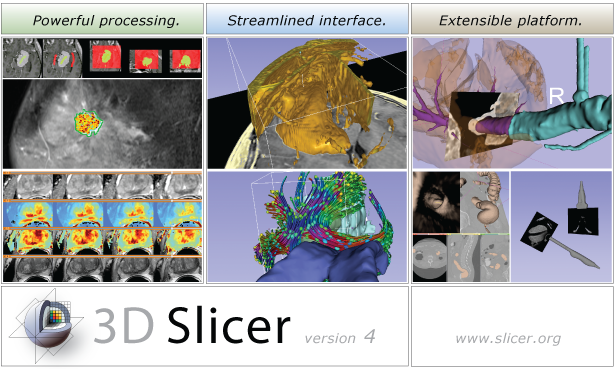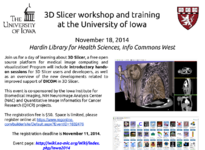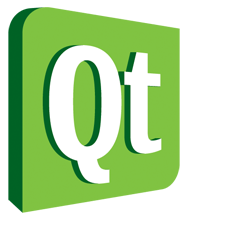Documentation/Nightly/Announcements
|
For the latest Slicer documentation, visit the read-the-docs. |
| Summary | What is 3D Slicer | Slicer Nightly Highlights | Slicer Training | Slicer Extensions | Other Improvements, Additions & Documentation |
Summary
The community of Slicer developers is proud to announce the release of Slicer Nightly.
- Slicer Nightly introduces
- An improved App Store, known as the Extension Manager, for adding plug-ins to Slicer. More than 80 plug-ins and packages of plug-ins are currently available.
- Close to 150 feature improvements and bug fixes have resulted in improved performance and stability.
- Improvements to many modules.
- Click here to download Slicer Nightly for different platforms and find pointers to the source code, mailing lists and the bug tracker.
- Please note that Slicer continues to be a research package and is not intended for clinical use. Testing of functionality is an ongoing activity with high priority, however, some features of Slicer are not fully tested.
- The Slicer Training page provides a series of tutorials and data sets for training in the use of Slicer.
slicer.org is the portal to the application, training materials, and the development community.
What is 3D Slicer
3D Slicer is:
- A software platform for the analysis (including registration and interactive segmentation) and visualization (including volume rendering) of medical images and for research in image guided therapy.
- A free, open source software available on multiple operating systems: Linux, MacOSX and Windows
- Extensible, with powerful plug-in capabilities for adding algorithms and applications.
Features include:
- Multi organ: from head to toe.
- Support for multi-modality imaging including, MRI, CT, US, nuclear medicine, and microscopy.
- Bidirectional interface for devices.
There is no restriction on use, but Slicer is not approved for clinical use and intended for research. Permissions and compliance with applicable rules are the responsibility of the user. For details on the license see here
Slicer Nightly Highlights
- New and Improved Modules
- Improved NameOfModule module with XXX for YYYY - click here for demo video.
- Improved ....
- Something else
- And a last one
Slicer Training
The Slicer Training page provides a series of updated tutorials and data sets for training in the use of Slicer Nightly.
- New Tutorials
Slicer Extensions
- New and Improved Extensions
Airway Segmentation to segment the airway from chest CT images. UPDATED
Extensions removed
- NA
Extensions renamed
- PyDevRemoteDebug -> DebuggingTools
- MultidimData -> Sequences
- TrackerStabilizer -> Slicer-TrackerStabilizer
- AirwaySegmentation -> Slicer-AirwaySegmentation
Other Improvements, Additions & Documentation
Optimization
- Improved performance of the rendering pipeline by optimizing observations management
- Reduced the memory footprint by fixing memory leaks
- Reduced the size of the installer
- Faster loading of the image stack (png, jpg, bmp, tiff...)
Rendering / Visualization
- Added Multi-sampling option
CLI / SlicerExecutionModel
- Improved CLI AutoRun by ensuring that the slice view is not reset when inputs are updated.
- CLI input and output files are not removed when in developer mode
- Reduced the chance of crashes when CLI returns result images
Python scripting
- Added support for real Qt resources in Python (see r23290 for details).
- Improved VTK event support by adding a way to specify the CallData type (see here for details).
- Bundled pydicom python module into the Slicer package
- Added helper methods to
ScriptedLoadableModuleLogicfor managing parameter nodes
- SelfTest: Added the
clickAndDrag()method to the scripted module construct. It allows to send synthetic mouse events to the widget specified (qMRMLSliceWidget or qMRMLThreeDView)
- Improvements to the
slicer.utilpython module.- Added
modulePath(moduleName)method - Added
resetThreeDViews/resetSliceViews - Added
VTKObservationMixin - Added
getFirstNodeByClassAndName() - Added
NodeModifycontext manager: It allows to easily disable modified event associated with a node, and automatically re-enable them and invoking them if it applies.
- Added
- Markups: Added an event called PointEndInteractionEvent for marking the end of a fiducial interaction
- Reference information for how to write VTK filters and algorithms in python:
- The vtkPythonAlgorithm is great
- A VTK pipeline primer (part 1): Explains how VTK’s pipeline works in more detail:
vtkInformation,vtkInformationVectorandVTKPythonAlgorithmBase - A VTK pipeline primer (part 2): Dissecting the execution path to understand the inner-workings of algorithms:
RequestInformation - A VTK pipeline primer (part 3): Explains how
RequestUpdateExtentandRequestDatawork.
Other
- Help / Report a bug: Application error/warning/debug log messages are now saved to file. Added option to copy/paste log file contents of recent Slicer sessions to bug reports.
For Developers
Under the hood
- VolumeLogic:
- Added method ResampleVolumeToReferenceVolume
- Added method CloneVolumeWithoutImageData
- Added support for user-defined stereo-viewing options
- Build-system
- Improved support for Visual Studio 2013
- Refactored management of external project launcher settings. See r23724
- Added option
Slicer_ITKV3_COMPATIBILITY. This option enabled by default will allow (if disabled) to build Slicer with ITKv3 compatibility later disabled andITK_USE_64BITS_IDSenabled.
- SlicerExecutionModel: Added ParameterSerializer support.
- Improved Toolkits
Moved from OpenIGTLink 66e272d to 849b434 (53 commits)
Looking at the Code Changes
From a git checkout you can easily see the all the commits since the time of the 4.4.0 release:
git log v4.3.0..HEAD
To see a summary of your own commits, you could use something like:
git log v4.3.0..HEAD --oneline --author=pieper
see the git log man page for more options.
Commit stats and full changelog








